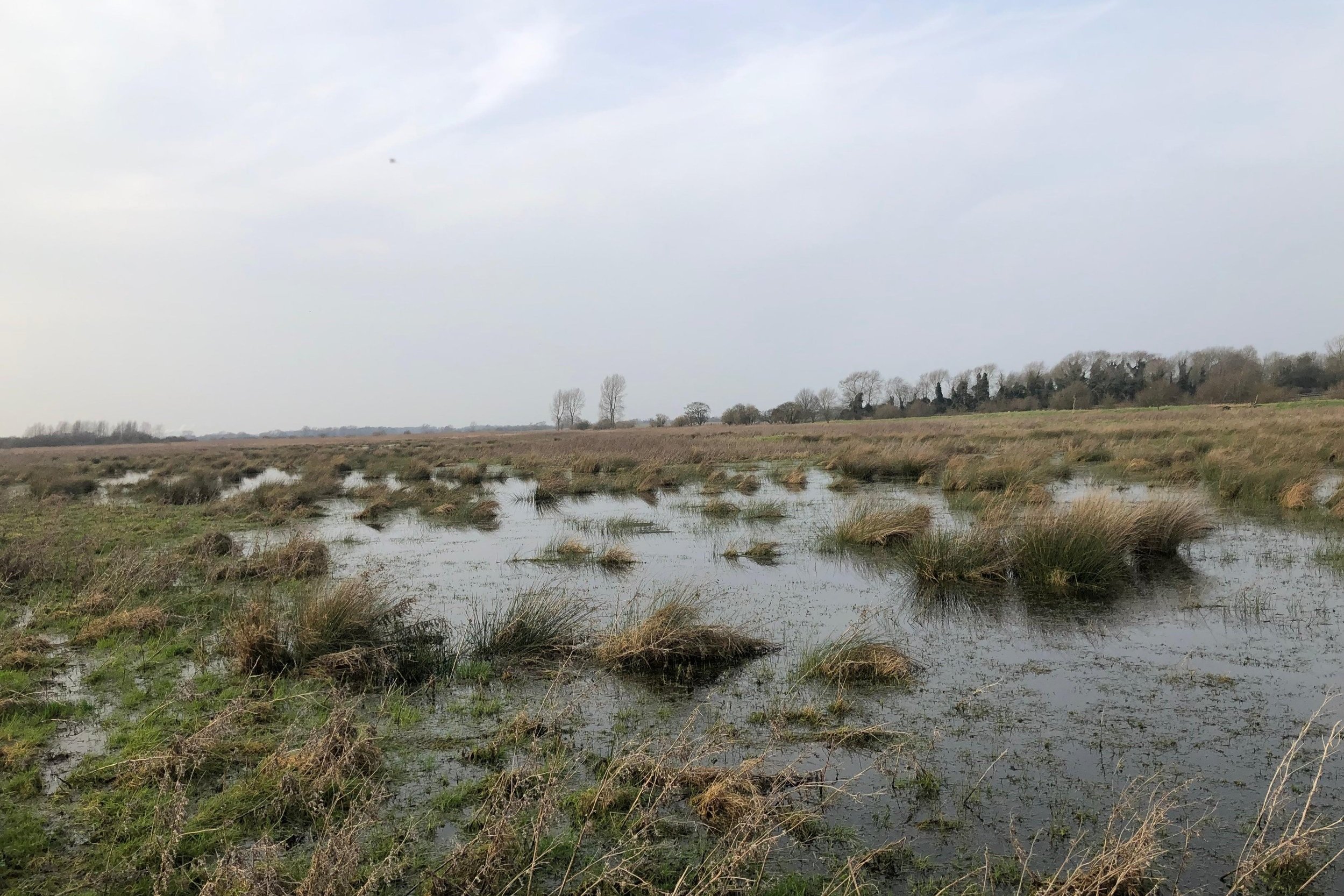High Fen in winterHigh Fen Wildland
Nattergal’s second site is High Fen in Norfolk, a 292 hectare grassland in the Fens. It represents an incredible opportunity to take an ecologically important site and supercharge it for nature using natural processes.
The story so far
-

Context
Until 2007, the land at High Fen was farmed for arable and also daffodil growing. But despite the deep and peaty soils, it was too wet and difficult to farm commercially and was sold. The next owners together with Natural England did a fantastic job to transform High Fen into a seasonally wet grassland, before selling it to Nattergal in December 2022.
-

Vision
At Nattergal, what we see is a species rich site but with largely one habitat type. With a few tweaks, natural capital investment and the reinstatement of natural processes, we will deliver a unique and wonderful habitat mosaic and wetland system in the Fens. We will also build a project that cleans water as it filters through the habitats and one that prevents carbon emissions through rewetting the peat. We will fund High Fen through the sale of key ecosystem services, such as biodiversity uplift, and the generation of peatland carbon credits.
Our Approach Explained
Natural Capital Manager, Matthew Hay, provides some context for the future vision, introducing the rich history of the Fens, the unique hydrological and geological challenges of High Fen, and our science-led approach to achieving our vision of significant biodiversity uplift.
Following the Science
History & Hydrology
The 400,000ha of wetland landscape known as the Fens emerged at the end of the last ice age. For thousands of years it was ecologically rich and home to abundant biodiversity until, in the 17th century, it was substantially drained for arable farming.
The land became incredibly productive and today it produces 7% of England’s agricultural output, contributing over £1billion to the economy. However the ecological consequences of the drainage have been catastrophic, both in terms of biodiversity and peatland loss.
Today the Fens is an enormous source of carbon emissions and falls far short of its ecological potential.
Baselining
Working with the Centre for Landscape Regeneration, a project being delivered by the Centre of Hydrology and Ecology at the University of Cambridge, we have discovered that our species abundance is poor and concentrated around water. Getting more of the site wet for longer will allow species richness to spill out.
Beyond biodiversity, we have also measured the distribution and depth of our peatland, which urgently needs preserved as a vital carbon store. We have established that 40% of our wildland contains peat, which if left to dry out distributes carbon dioxide into the atmosphere. Rewetting the peat and securing the storage of carbon dioxide is a major priority.
Ambition
Our vision is to rewet the land for as much of the year as possible, and to develop a far greater species richness. We imagine a mosaic of fenland habitats comprised of reed beds, willow carr and open meres.
On dry land, we envisage a mixture of scrub and woodland alongside dense species-rich grassland. Large herbivores including red deer, water buffalo, and perhaps even European elk, will be vital in shaping these habitats.
We look forward to the day when tourists navigating the wetlands in canoes, searching for bitterns and bearded tits.
Plan
Rewetting the land requires more than just removing the man-made drainage on our own land. There are a great number of additional factors at play. We have applied a number of innovative techniques, such as topography mapping using LIDAR, and the installation of hundreds of water monitoring stations, to fully understand how the landscape will function in its natural state.
High Fen is effectively a leaky bath tub from which water continuously drains away. Installing sub-surface bunds lined with clay at strategic positions across the site will stop the lateral flow of water in targeted areas of the site (not affecting our neighbours), allowing us to saturate the ground and reap the rewards. The sale of natural capital products, namely peatland carbon credits and biodiversity net gain units, will help us finance the work.
Further Reading
Working with Water
Read the full article about the fascinating hydrology and geology at High Fen Wildland, where our baselining challenged conventional thinking.
A Guided Tour of High Fen
Head of Natural Capital, Ivan de Klee, takes Oliver Bolton of Wilder Earth on a tour of High Fen to explain our future vision and the challenges involved in baselining the site.
The Changing Seasons at High Fen
Natural Capital Manager, Matthew Hay, shares his hopes of seeing breeding waders return, along with the wider restoration of a rich biodiversity, from the bottom up.
Support For High Fen
Joe Martin, Local farmer
“High Fen was at the forefront of wetland habitat creation under AES 20 years ago and has delivered over many years and set an example for others to follow. Nattergal's involvement is an exciting new development for the farm, and I look forward to the project's rejuvenation, innovative thinking and works to create even higher standards and habitats.”
William Sutherland, Miriam Rothschild Chair in Conservation Biology, University of Cambridge
“The Fens were clearly once full of wildlife and delivering multiple environmental benefits to the community. High Fen is such an exciting visionary project with plans to restore some of this diversity and deliver services for society. I am delighted that cutting-edge techniques are being used to document the changes.”
Jo Thomas, Waterscape Manager (The Fens), Wildfowl and Wetlands Trust
“WWT very much welcome the restoration of High Fen as an important nature – rich wetland and for the provision of multiple ecosystem services. It is a fantastic site and has lots more wetland ‘wow-factor’ potential.”












